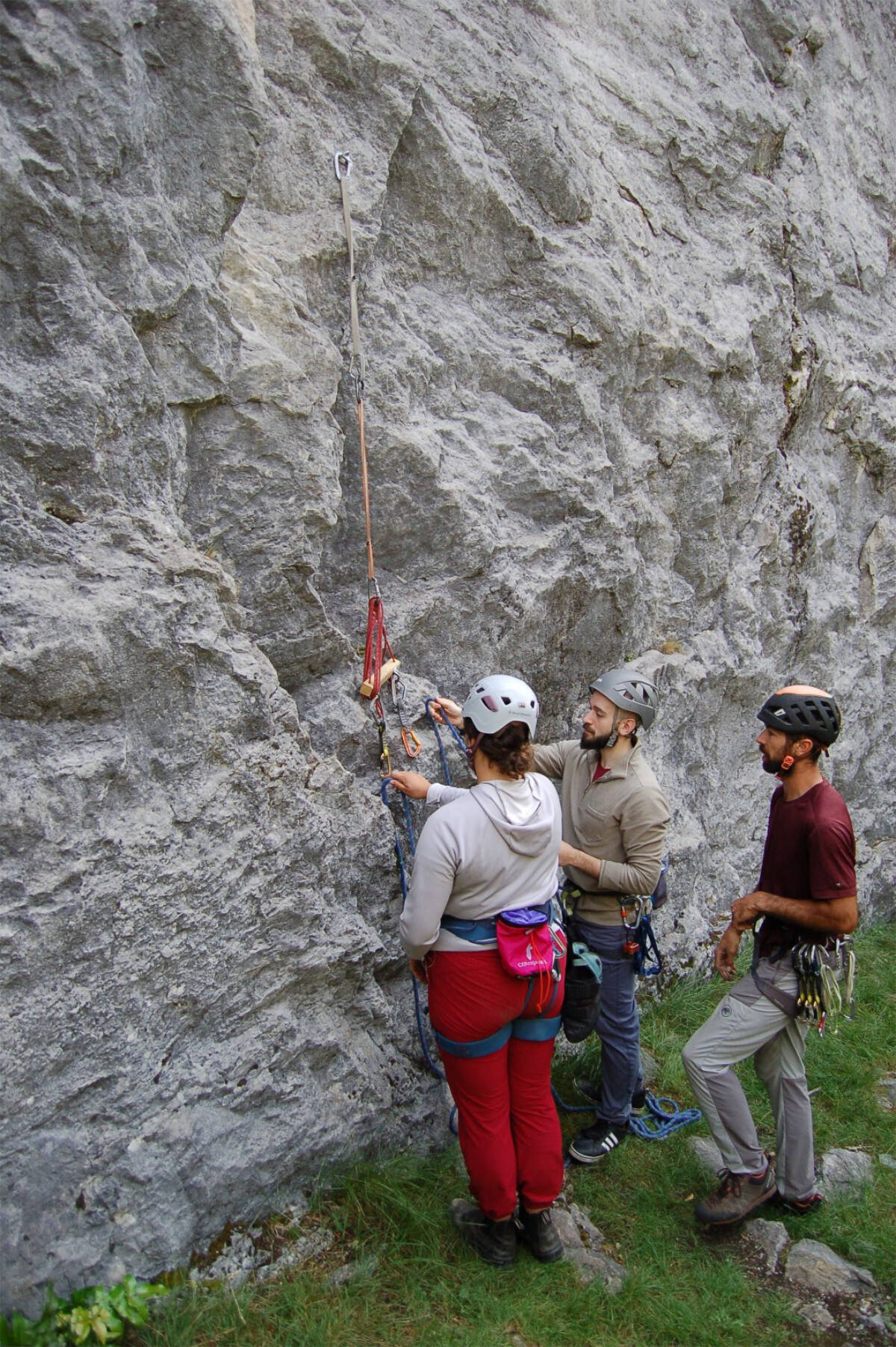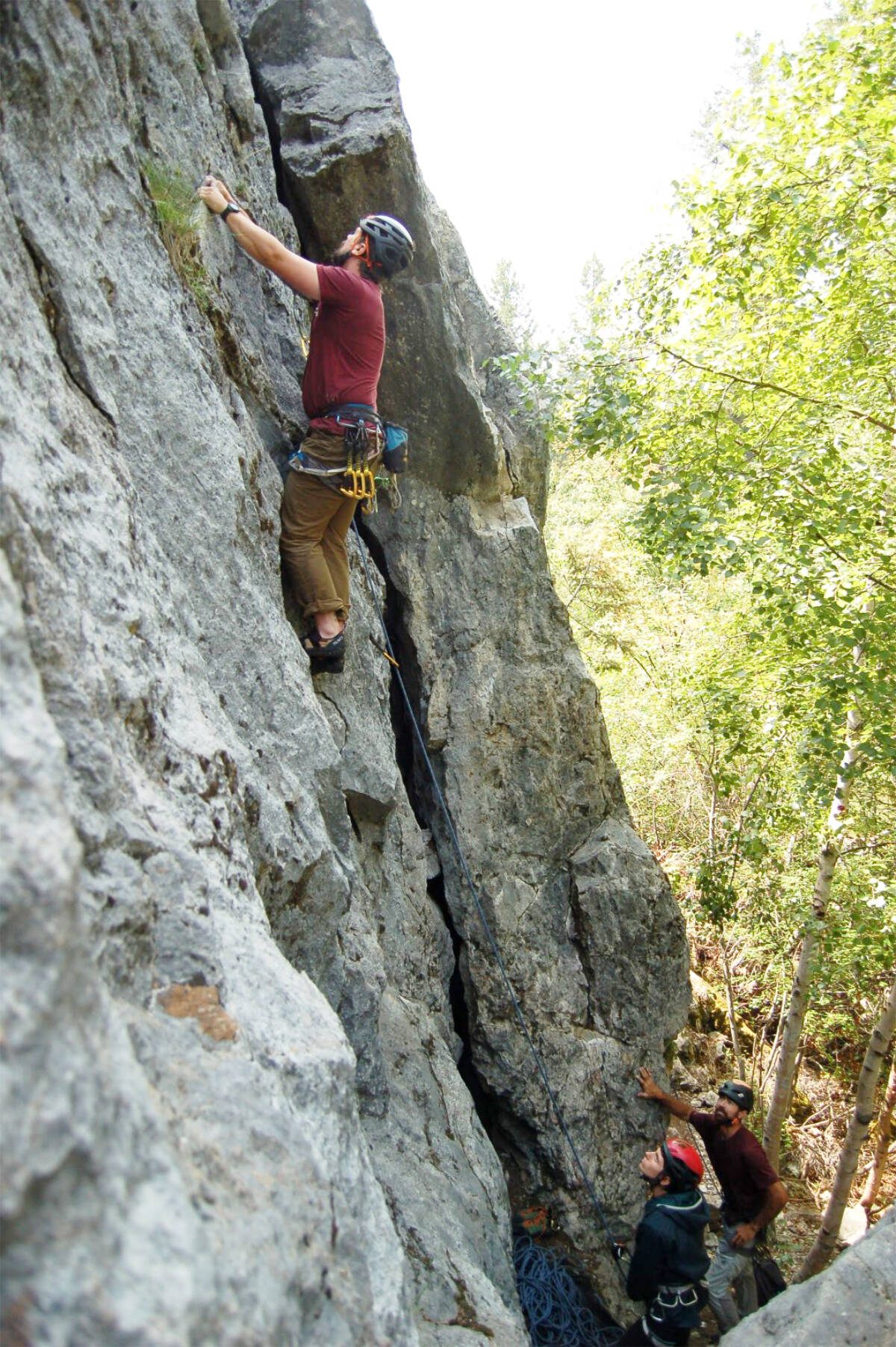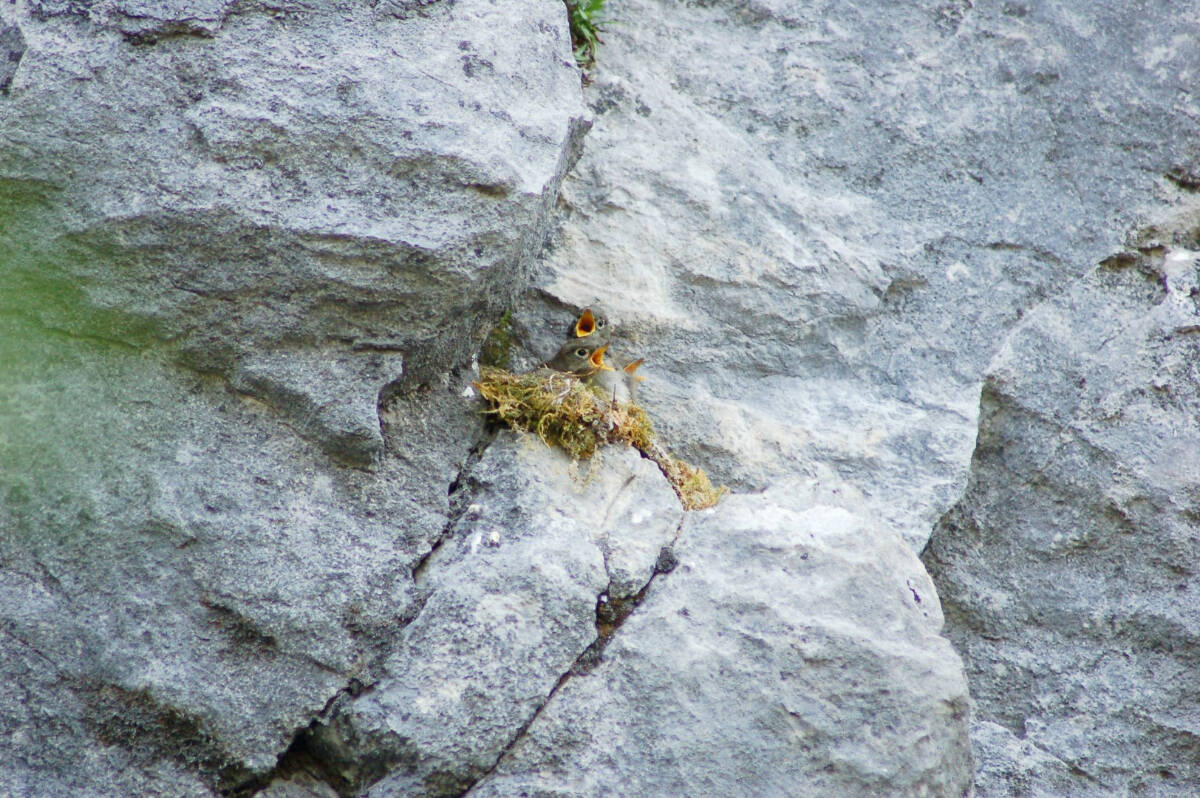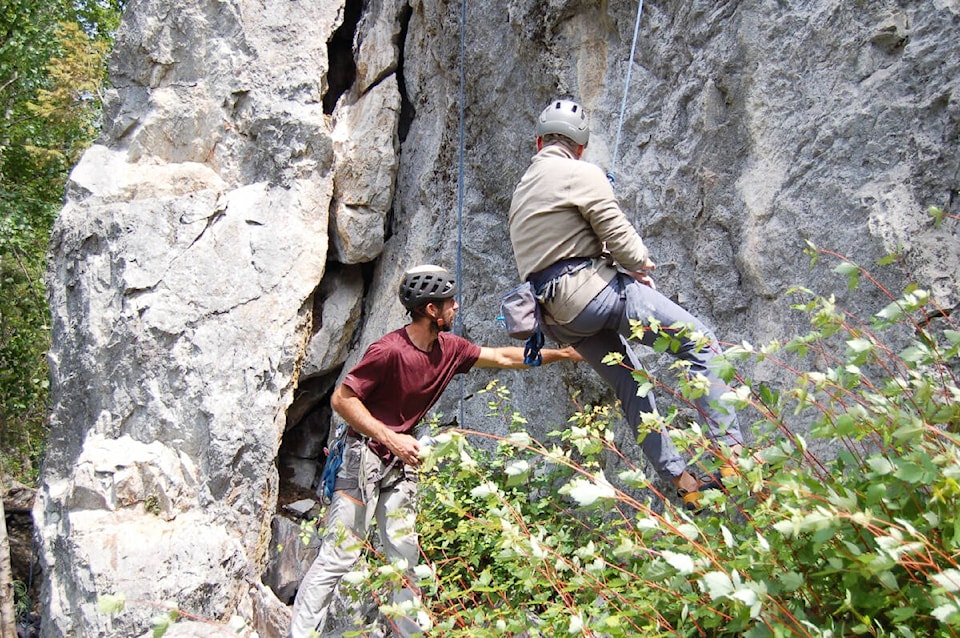The Williams Lake Climbing Association (WLCA) once again hosted some rock climbing clinics near Williams Lake.
This year’s courses took place over three days up at the Esler Bluffs on July 14, 15, and 16.
Canada West Mountain School was hired by the Williams Lake Climbing Association to put on three days of rock climbing instruction.
The school sent rock guide Phil Binnema to instruct the clinics, which were made possible through financial contributions from the Williams Lake Community Forest (WLCF), within which Esler Bluffs is located.
“The financial contributions from the WLCF don’t fully cover the guiding cost, but they enabled us to steeply discount the cost of the course in order to remove the financial barrier to entry and make rock climbing more accessible to all,” explained Ekai Jorgenson, president of the WLCA.
An additional part of the grant will go towards minor maintenance and improvement activities of the infrastructure at Esler Bluffs such as signage, trail maintenance, erosion control and outhouse fixes.
There were four registered in the course on Friday.

For Saturday, the class had a full registration and more people interested, however, the smoke meant two didn’t attend and one person was ill. The group added one more volunteer to fill in the empty spots to give the person a refresher. So in total, seven participated in the class.
Sunday was an advanced clinic, for those who were already confident belayers. They ended up with seven in the group, after one person dropped out because she was stuck in Vancouver.
Jorgenson said over the two introduction to rock climbing days on Friday and Saturday, they covered safety at the top and bottom of the cliffs, what the gear is and how to inspect it and make sure it’s safe.
“They then got a chance to rappel, which is always exciting,” said Jorgenson.
Students then learned how to belay and practiced belaying and climbing under close supervision of the guide.
Then lunch, which was provided by the climbing association and hosted by Jorgenson.
Then they learned how to make a ‘golden standard’ or equalized masterpoint anchor and practiced it on the ground. This was followed by learning about using tree anchors to access exposed anchors or anchors in steep unstable terrain, and then they climbed some more.
For the intermediate day on Sunday, the content was participant driven, said Jorgenson.
“We had quite a mix of experience in the course — including two people who climbed outdoors for the first time on Saturday,” he said.
The day started with a quick refresher and then went right into lead climbing, which is taking the rope up with the climber and clipping into bolted anchor points along the way.
After some instruction, Binnema did a demo and Jorgenson demonstrated lead belaying. The group then moved into some instruction on how to clip properly, did some practice clips on the ground, then to practice some people just went lead climbing while others did mock leads, with one rope on top rope and one rope on lead.

Once again, Jorgenson hosted a lunch provided by the climbing association.
Then some people did some practice cam and nut placements, which are “trad” or traditional climbing protection, relying on gear placed in natural features of the rock for protection.
These placements were then ‘rated’ by Binnema and checked for quality.
Finally the group moved into single strand rappelling and transitioning from one system to another, and finished up with instruction on cleaning anchors.
“We then all climbed up and removed an anchor and came back down, and that was that,” said Jorgenson. Despite challenging air quality with smoky air on Friday and very smoky air on Saturday, the groups managed just fine, apparently. Sunday was sunny and much clearer.
“Everyone I spoke to had a great time,” said Jorgenson, noting lunch was a hit for both the participants and the guide.
Save-On-Foods donated a $25 gift card to go towards the lunch supplies.
One participant was scared of heights but persevered, said Jorgenson, adding the intro days were very successful in getting people to actually climb.
“The kids on Friday were of course way too good,” said Jorgenson.
In the advanced clinic, almost everyone left feeling confident enough to climb at Esler with no further instruction, he said, noting everyone who participated in the training progressed, no matter where they started from.
“Phil’s instruction on the fundamentals and the finer points of movement on rock were usually instantly realized in improvements,” said Jorgenson.
Jorgenson said he and another climbing club member climbed with the guide on Thursday so he could familiarize himself with the area.
“He sent some of the harder climbs which was great to watch,” said Jorgenson, noting the guide expressed amazement at the quality and quantity of climbs in Williams Lake.
Jorgenson said the guide stated the ongoing development on the backside of the bluffs “could be something world-class”.
Local members also took the guide to try out the disc golf course in Boitanio Park, which he really enjoyed.
“Also we saw baby yellow flycatchers who are nesting on Therapy (a 10a graded rock climbing route) fly for the first time on Sunday,” said Jorgenson. H said four birds from four eggs have hatched on the rock face, and three left the nest while the classes were out at the bluffs.

Jorgenson said the group hopes to put on another set of clinics next year.
They are entirely volunteer driven, so WLCA man-power is a major factor.
The bouldering program will run again out of the high school facility thanks to the Williams Lake Recreation Complex and School District 27.
As well, they hope to continue improvements to the Esler Bluffs area, and start a bolt fund for all the volunteer route developers out there that make Esler the fantastic climbing spot that it is.
For more information on the Williams Lake Climbing Association, email wlclimbing@gmail.com or contact @wlclimbing on Instagram or go to the website: https://wlclimbing.wordpress.com/.
READ MORE: Williams Lake Climbing Association hosts climbing clinics
READ MORE: CLIMB ON: Williams Lake Climbing Association members get back on the wall
Do you have a comment about this story? email:
ruth.lloyd@wltribune.com
Like us on Facebook and follow us on Twitter.
